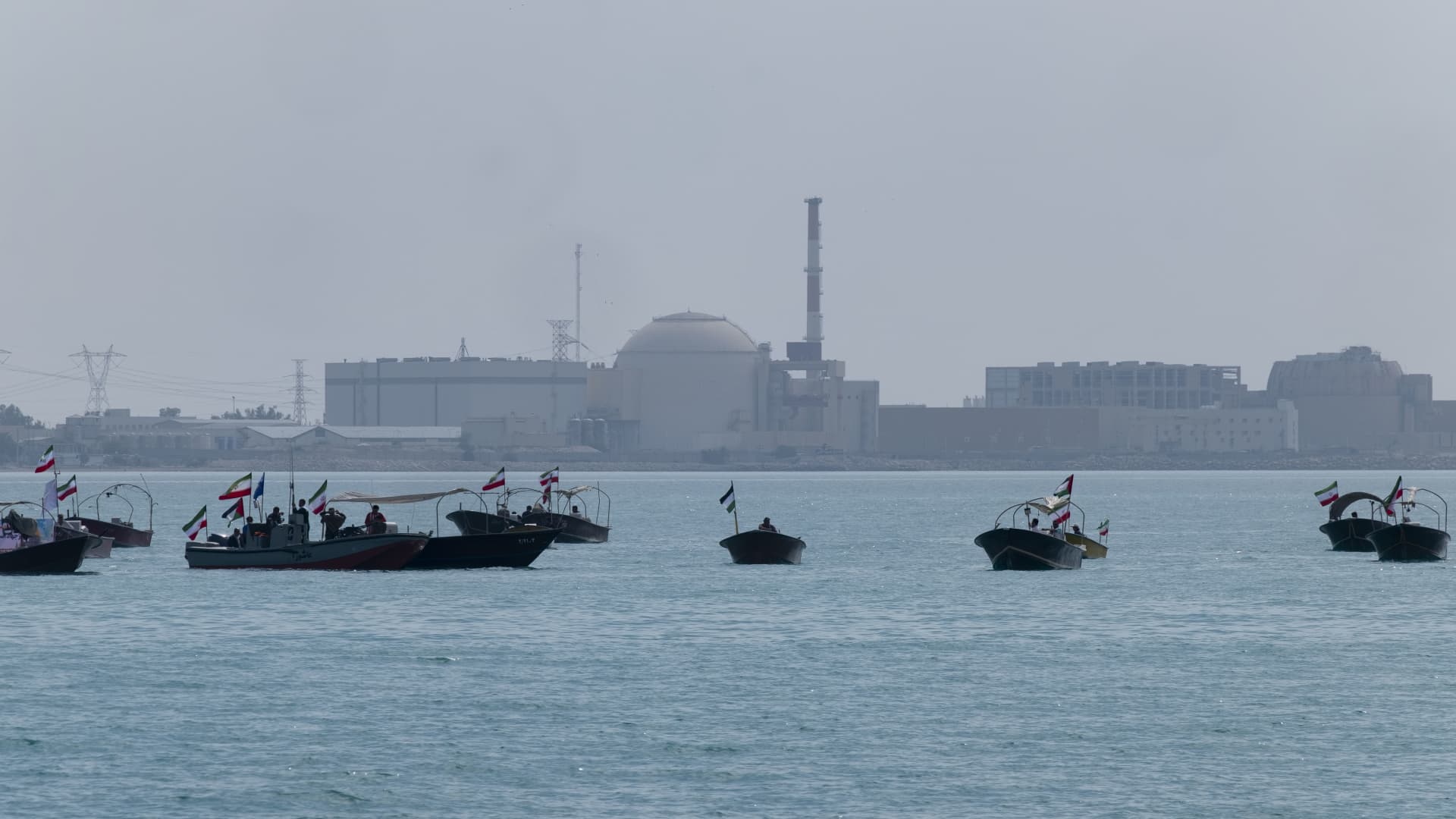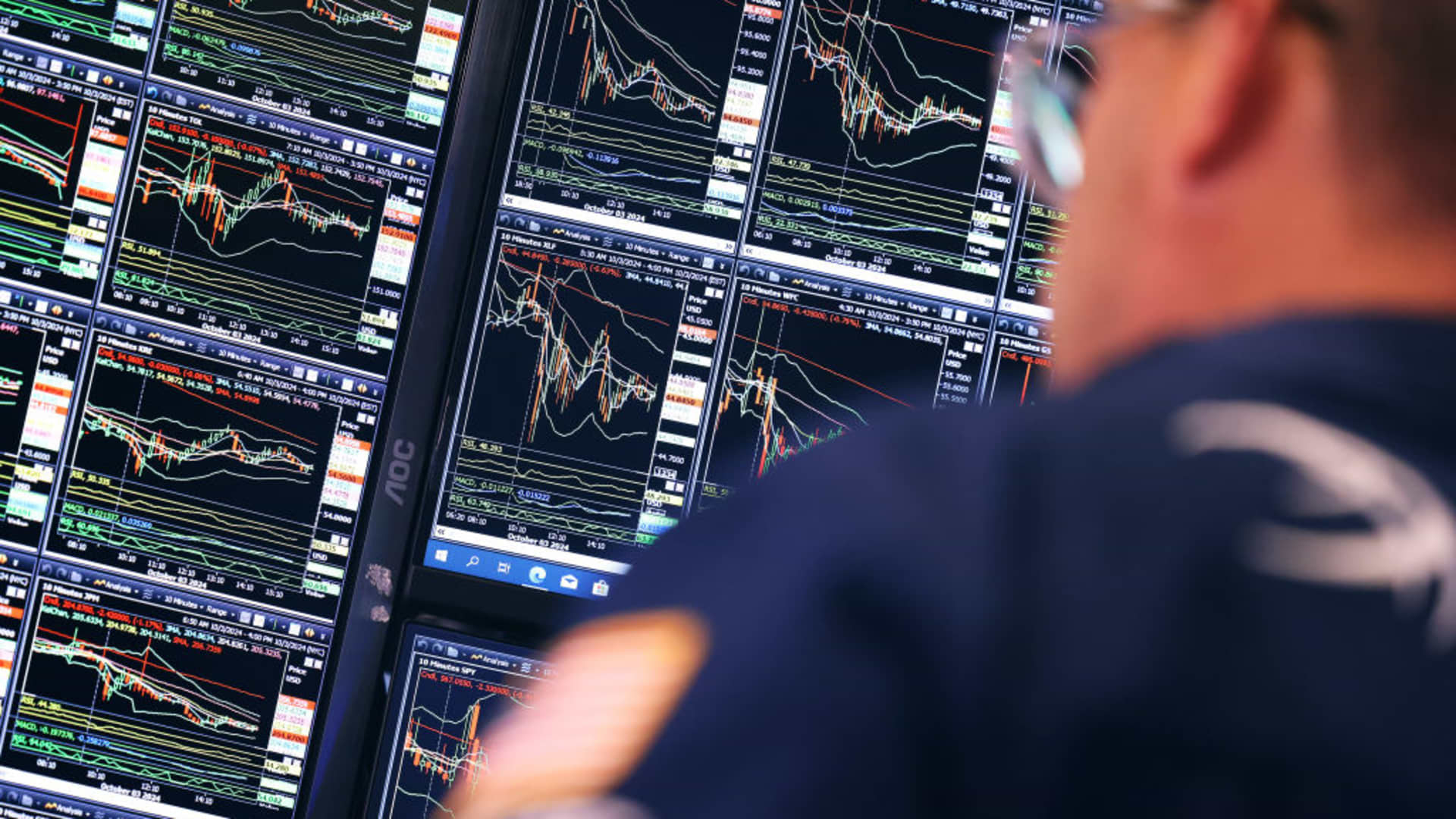Science & Environment
Water companies to return £158m on bills over poor performance

Water companies have been ordered to return £158m to customers via lower bills next year after missing key targets on issues like pollution.
The industry regulator Ofwat announced the rebate following its annual review of water and wastewater companies’ performance in England and Wales.
Chief executive David Black warned companies that “money alone” would not solve the issue and there needed to be a change in culture.
Industry body Water UK have been approached for a comment.
Ofwat assesses the performance of the 17 largest water and wastewater companies in England and Wales each year against key targets for issues such as sewer flooding, supply interruptions and water leaks.
For the second year in a row, no company achieved the top rating, although four companies did show an improvement from last year.
“Companies must implement actions now to improve performance… and not wait till government or regulators ask them to act,” David Black said.
For the worst performing companies, failure to meet the targets means they will now have to collectively return £157.6m to customers on their bills for 2025-2026.
However, this is only expected to amount to a reduction of a few pounds on bills and will be dwarfed by the expected long-term increase of £94 per household over the next five years, which Ofwat is currently proposing.
This price rise is still being negotiated with water companies, who argue that even higher bills are needed if they are to afford the infrastructure improvements required to tackle some of the issues raised in this performance report.
Science & Environment
Nobel Prize goes to scientists’ work on machine learning

The Nobel Prize in Physics has been awarded to two scientists, John Hopfield and Geoffrey Hinton, for their work on machine learning.
The announcement was made by the Royal Swedish Academy of Sciences at a press conference in Stockholm, Sweden.
Machine learning is key to artificial intelligence as it develops how a computer can train itself to generate information.
It drives a vast range of technology that we use today from how we search the internet to editing photographs on our phones.
The winners share a prize fund worth 11m Swedish kronor (£810,000)
This breaking news story is being updated and more details will be published shortly. Please refresh the page for the fullest version.
You can receive Breaking News on a smartphone or tablet via the BBC News App. You can also follow @BBCBreaking on Twitter to get the latest alerts.
Science & Environment
S&P Dan Yergin warns dangerous time for global economy on MidEast tensions


The global economy is entering a “dangerous time” like never before as Middle East tensions remain elevated, said S&P Global’s vice chairman Daniel Yergin.
Since the Israel-Hamas conflict began on Oct. 7 of last year, the oil market has experienced minimal disruptions, with prices remaining under pressure as a result of increased U.S. production and weak demand from China. However, this sentiment has been shifting. Oil prices spiked last week on fears that Israel could target Iran’s oil industry in retaliation for Tehran’s ballistic missile attack, with industry analysts raising concerns about a genuine threat to supply.
“The Israelis have not concluded what they’re going to do in terms of a strike — that’s under discussion,” U.S. President Joe Biden told reporters at a White House press briefing last week, adding that he discouraged Israel from striking Iranian oil facilities.
Last week, both oil benchmarks saw their biggest weekly gain since March 2023. During Asia trading on Tuesday, global benchmark Brent slipped 1.77% to $79.50 a barrel, while U.S. West Texas Intermediate traded 1.83% lower at $75.77 per barrel.
Yergin told CNBC’s “Squawk Box Asia” that he expects Israeli retaliation will not just be a replay of last April, but something “much stronger.”
In April, Iran and Israel came to blows but ultimately avoided a full-scale war. Iran fired hundreds of ballistic missiles and drones at Israel in retaliation for an attack on an Iranian diplomatic facility in Syria.
When asked if the global economy is on the precipice of another supply shock resulting from Middle East tensions, Yergin said it’s a precarious time for markets.
“I think it’s a very dangerous time, one that we haven’t seen,” he said.
Additionally, while Yergin maintained that it is not certain whether Iranians have operational nuclear weapons, that is still “certainly in the backdrop,” particularly through the lens of the Israelis.
“The betting is that the Israelis would not attack, try to attack, the nuclear facilities at this time. But a few months from now, a few weeks from now, whatever it is, Iran would have the capacity — it’s thought — to deliver a nuclear weapon, and that raises the stakes,” he said, likening the moment to the 1962 Cuban Missile Crisis.
That said, Israel is a lot more concerned about Iran’s nuclear facilities than the Iranian oil industry, said Pavel Molchanov, managing director of investment services firm Raymond James. Iran’s nuclear program has progressed to a stage where, in approximately one week, the country could potentially enrich enough uranium for five fission weapons, according to estimates by Iran Watch, a website published by the Wisconsin Project on Nuclear Arms Control.
“The worst-case scenario would be something that Iran can do on its own, which is a blockade of the Strait of Hormuz. So this is not directly related to Israeli airstrikes or missiles.
The strait, between Oman and Iran, is a vital channel where about one fifth of global oil production flows daily, according to the U.S. Energy Information Administration. It is a strategically important waterway linking crude producers in the Middle East with key markets across the world.
The inability of oil to traverse through the strait, even temporarily, can increase shipping costs, lead to considerable supply delays and ratchet up global energy prices, with some surmising that a worst-case scenario could prompt oil prices to surge above $100 a barrel.
Science & Environment
What supply disruption could mean for oil markets

Basij paramilitary force speed boats are sailing along the Persian Gulf near the Bushehr nuclear power plant during the IRGC marine parade commemorating the Persian Gulf National Day in the south of Iran, on April 29, 2024.
Nurphoto | Nurphoto | Getty Images
An escalating conflict in the Middle East has thrust the world’s most important oil artery back into the global spotlight.
The Strait of Hormuz is widely recognized as a vital oil transit chokepoint. Situated between Iran and Oman, the waterway is a narrow but strategically important channel that links crude producers in the Middle East with key markets across the world.
In 2022, oil flow in the Strait of Hormuz averaged 21 million barrels per day, according to the U.S. Energy Information Administration (EIA). That’s the equivalent of about 21% of the global crude trade.
The inability of oil to traverse through a major chokepoint, even temporarily, can ratchet up global energy prices, raise shipping costs and create significant supply delays.
For many energy analysts, an event where there is a blockade or a significant disruption to flows via the Strait of Hormuz, is seen as a worst-case scenario — one that could prompt oil prices to climb far above $100 a barrel.

“The worst case could well be if Israel strikes Iran [and] Iran takes actions to slow down or potentially try to block the Strait of Hormuz,” Alan Gelder, energy analyst at Wood Mackenzie, told CNBC’s “Squawk Box Europe” on Monday.
“[This] would have a far more dramatic effect because that is where 20% of global crude exports travel through from the likes of Saudi Arabia, Kuwait and Iraq — and the UAE to some extent — that are the holders of the global spare capacity,” Gelder said.
“So, we contend the market is not pricing in the worst case, it is pricing in the potential impact on Iranian energy infrastructure,” he added.
Israel’s promise to hit back at Iran following a ballistic missile attack last week has stoked speculation that the country could soon launch an attack on Tehran’s energy infrastructure.
Iran, which has pledged a forceful response of its own in the event of any further Israeli actions, is a major player in the global oil market.
How high could oil prices go?
Energy analysts have questioned whether oil markets are being too complacent about the risks of a widening conflict in the Middle East.
Saul Kavonic, senior research analyst at MST Financial, said supply disruptions along the Strait of Hormuz could send oil prices significantly higher.
“If we see an attack on Iranian production, up to about 3% of global supply could be curtailed and even if we just see tighter sanctions, that could also start to curtail supply by up to 3%. That on its own could see oil approach 100 or even exceed 100 dollars per barrel,” Kavonic told CNBC’s “Squawk Box Asia” on Oct. 3.
“If [transit through the Strait of Hormuz] was to be impacted, we’re talking about an oil price impact that would be three times larger than the oil price shocks of the 1970s in the wake of the Iranian revolution and the Arab oil embargo, and now we’re talking about $150 plus a barrel of oil,” he added.
Oil prices traded more than 3% on Monday, extending gains even after notching their sharpest weekly gain since early 2023 last week.
International benchmark Brent crude futures with December expiry were last seen trading 1.5% lower at $79.74 a barrel, while U.S. West Texas Intermediate futures stood at $75.99, down 1.5%.

Bjarne Schieldrop, chief commodities analyst at Swedish bank SEB, said the general rule of thumb in commodity markets is that if supply is severely restricted, then the price will often spike to between five and 10 times its normal level.
“So, if worst came to worst and the Strait of Hormuz was closed for a month or more, then Brent crude would likely spike to USD 350/b, the world economy would crater and the oil price would fall back to below USD 200/b again over some time,” Schieldrop said Friday in a research note.
“But seeing where the oil price sits right now the market doesn’t seem to hold much probability for such a development at all,” he added.
What about gas markets?
Warren Patterson, head of commodities strategy at Dutch bank ING, said any disruptions to transit along the Strait of Hormuz would have seismic consequences for global energy markets.
“The key concern, while still extreme, would be that these disruptions spill over to the Strait of Hormuz, affecting Persian Gulf oil flows,” Patterson said in a research note published on Oct. 4.
“A significant disruption to these flows would be enough to push oil prices to new record highs, surpassing the record high of close to $150/bbl in 2008,” he added.
View looking north showing the Strait of Hormuz, connecting the Gulf of Oman with the Persian Gulf, with the Zagros Mountains and Qeshm Island of Iran in the background, and areas of Oman, Muscat and the United Arab Emirates in the foreground, as seen from the Space Shuttle Columbia during shuttle mission STS-52, 22nd October to 1st November 1992.
Space Frontiers | Archive Photos | Getty Images
ING’s Patterson said any supply disruption in relation to the Strait of Hormuz would not be isolated to the oil market.
“It could also potentially lead to disruptions in [liquified natural gas] flows from Qatar, which makes up more than 20% of global LNG trade,” he continued.
“This would be a shock to global gas markets, particularly as we move into the northern hemisphere winter, where we see stronger gas demand for heating purposes. While we are seeing a ramp-up in new LNG export capacity, this still falls well short of Qatari export volumes.”
Science & Environment
Certain quantum systems may be able to defy entropy’s effects forever


Some quantum systems may resist an effect of entropy called thermalisation
Giroscience / Science Photo Library
The fundamental laws of physics insist that no patterns can permanently survive nature’s steady course towards disorder – or can they? A new proof offers a peculiar counterexample to the once-settled notion that all collections of particles must eventually succumb to entropy.
“Our result might seem quite surprising,” says Andrew Lucas at the University of Colorado. But his team’s finding is actually the most recent entry in a decades-long debate over whether quantum particles can maintain certain properties forever.
Science & Environment
Fear is the stock killer

Traders work on the floor of the New York Stock Exchange during afternoon trading on October 03, 2024 in New York City.
Michael M. Santiago | Getty Images
This report is from today’s CNBC Daily Open, our international markets newsletter. CNBC Daily Open brings investors up to speed on everything they need to know, no matter where they are. Like what you see? You can subscribe here.
What you need to know today
Stocks slumped on persistent fears
Major U.S. indexes retreated on Monday. The S&P 500 lost 0.96%, the Dow Jones Industrial Average dropped 0.94% and the Nasdaq Composite slumped 1.18%. But Super Micro shares were a bright spot, jumping 15.8%. Europe’s regional Stoxx 600 index added 0.18%. Household goods led gains, closing 0.97% higher, while tech shares fell 0.65%.
No more jumbo cuts
After last week’s expectation-busting jobs report for September, there’s virtually zero chance the U.S. Federal Reserve will reduce interest rates by half a percentage point at its next meeting, strategists told CNBC. Traders agree. A week ago, they bet on a 34.7% chance of another jumbo cut by the Fed; today, it’s 0%, according to the CME FedWatch Tool.
AI demand is still high
The artificial intelligence boom “still has some time to go,” Foxconn Chief Executive and Chairman of Foxconn Young Liu told CNBC. Foxconn, which reported better-than-expected earnings for the third quarter, manufactures electronics for technology giants like Apple and Nvidia. Demand for Nvidia’s latest chip Blackwell is “much better than we thought,” said Liu.
Tensions push oil prices higher
Oil prices jumped around 3.7% on Monday on worries Israel will attack Iran’s oil production facilities. If Israel hits Kharg Island, it could disrupt the transport of 90% of Iran’s crude exports, said an analyst. Last week was the best for West Texas Intermediate and Brent oil prices in more than one-and-a-half years. They surged 9.1% and 8.4% respectively.
[PRO] Goldman’s getting more bullish
The S&P 500 is in the red in October so far. But Goldman Sachs raised its 2024 target for the S&P to 6,000 from 5,600, making it the second-highest forecast on Wall Street, according to the CNBC Market Strategist Survey. Goldman also increased its 12-month S&P target to 6,300 from 6,000. Here’s why the bank is so bullish on stocks.
The bottom line
September’s blockbuster jobs report, released Friday, lifted sentiment and stocks enough that major indexes reversed their losses and ended last week in the green, but just barely.
That halo has now faded away. Markets are back to contending with rising oil prices, inflation possibly reaccelerating, fewer-than-expected rate cuts and potentially even a distant recession.
Oil prices spiked yesterday after having their best week in over a year. And September’s blockbuster jobs report, the futures market is pricing in a 13.7% chance the Fed will not cut rates at all at its November meeting. That’s a drastic change from a week ago when traders thought there was a 34.7% chance of a 50-basis-point cut.
But a recession?
Admittedly, that’s speculation on my part. But it bears pointing out that the yield curve between the 10- and 2-year Treasurys is “getting close to flipping back into danger territory,” as CNBC’s Jeff Cox noted.
Simply put, when the 10-year yield is lower than that of the 2-year, the yield curve is inverted – which has almost always preceded a recession since the mid-1970s. The yield curve inverted in early July 2022 and normalized in early September.
After Monday, however, the gap between the 10- and 2-year yields is now just 3.5 basis points. It’s not inconceivable, then, for investors who take stock in what the yield curve signals to panic a little.
That said, strategists think a recession is a far-fetched idea, considering the health of the U.S. economy.
As David Roche, founder and strategist at Quantum Strategy, put it, “the economy is fine, thank you very much.”
So much so that “the probability of the American economy going into recession, at least in the fourth quarter of this year, and probably in the first quarter of next year, is close to zero,” said Bob Parker, senior advisor at the International Capital Markets Association.
Concrete numbers are driving market movement. But there’s an undercurrent of fear that can perhaps run contrary to what some of those numbers are saying.
– CNBC’s, Jeff Cox, Lisa Kailai Han and Jesse Pound contributed to this story.
Science & Environment
MicroRNA discovery in worms leads to Nobel Prize in medicine

Watch CBS News
Be the first to know
Get browser notifications for breaking news, live events, and exclusive reporting.
-

 Womens Workouts2 weeks ago
Womens Workouts2 weeks ago3 Day Full Body Women’s Dumbbell Only Workout
-

 Science & Environment3 weeks ago
Science & Environment3 weeks agoHow to unsnarl a tangle of threads, according to physics
-

 Science & Environment3 weeks ago
Science & Environment3 weeks agoHyperelastic gel is one of the stretchiest materials known to science
-

 Technology3 weeks ago
Technology3 weeks agoWould-be reality TV contestants ‘not looking real’
-

 Science & Environment3 weeks ago
Science & Environment3 weeks ago‘Running of the bulls’ festival crowds move like charged particles
-

 Science & Environment3 weeks ago
Science & Environment3 weeks agoMaxwell’s demon charges quantum batteries inside of a quantum computer
-

 News2 weeks ago
News2 weeks agoOur millionaire neighbour blocks us from using public footpath & screams at us in street.. it’s like living in a WARZONE – WordupNews
-
News3 weeks ago
the pick of new debut fiction
-

 Science & Environment3 weeks ago
Science & Environment3 weeks agoHow to wrap your mind around the real multiverse
-

 Science & Environment3 weeks ago
Science & Environment3 weeks agoQuantum ‘supersolid’ matter stirred using magnets
-

 Science & Environment3 weeks ago
Science & Environment3 weeks agoSunlight-trapping device can generate temperatures over 1000°C
-

 Science & Environment3 weeks ago
Science & Environment3 weeks agoITER: Is the world’s biggest fusion experiment dead after new delay to 2035?
-

 Science & Environment3 weeks ago
Science & Environment3 weeks agoLiquid crystals could improve quantum communication devices
-

 Science & Environment3 weeks ago
Science & Environment3 weeks agoQuantum forces used to automatically assemble tiny device
-

 Science & Environment3 weeks ago
Science & Environment3 weeks agoPhysicists are grappling with their own reproducibility crisis
-

 Science & Environment3 weeks ago
Science & Environment3 weeks agoWhy this is a golden age for life to thrive across the universe
-

 News3 weeks ago
News3 weeks agoYou’re a Hypocrite, And So Am I
-

 Sport3 weeks ago
Sport3 weeks agoJoshua vs Dubois: Chris Eubank Jr says ‘AJ’ could beat Tyson Fury and any other heavyweight in the world
-

 Science & Environment3 weeks ago
Science & Environment3 weeks agoTime travel sci-fi novel is a rip-roaringly good thought experiment
-

 Science & Environment3 weeks ago
Science & Environment3 weeks agoLaser helps turn an electron into a coil of mass and charge
-

 Science & Environment3 weeks ago
Science & Environment3 weeks agoCaroline Ellison aims to duck prison sentence for role in FTX collapse
-

 Science & Environment3 weeks ago
Science & Environment3 weeks agoNuclear fusion experiment overcomes two key operating hurdles
-
Business1 week ago
Eurosceptic Andrej Babiš eyes return to power in Czech Republic
-

 Science & Environment3 weeks ago
Science & Environment3 weeks agoNerve fibres in the brain could generate quantum entanglement
-

 Technology1 week ago
Technology1 week ago‘From a toaster to a server’: UK startup promises 5x ‘speed up without changing a line of code’ as it plans to take on Nvidia, AMD in the generative AI battlefield
-

 Football1 week ago
Football1 week agoFootball Focus: Martin Keown on Liverpool’s Alisson Becker
-

 Science & Environment3 weeks ago
Science & Environment3 weeks agoRethinking space and time could let us do away with dark matter
-

 News3 weeks ago
News3 weeks ago▶️ Hamas in the West Bank: Rising Support and Deadly Attacks You Might Not Know About
-

 Science & Environment2 weeks ago
Science & Environment2 weeks agoX-rays reveal half-billion-year-old insect ancestor
-

 MMA1 week ago
MMA1 week agoConor McGregor challenges ‘woeful’ Belal Muhammad, tells Ilia Topuria it’s ‘on sight’
-
Business1 week ago
Should London’s tax exiles head for Spain, Italy . . . or Wales?
-

 News3 weeks ago
News3 weeks ago▶️ Media Bias: How They Spin Attack on Hezbollah and Ignore the Reality
-

 Science & Environment3 weeks ago
Science & Environment3 weeks agoA slight curve helps rocks make the biggest splash
-

 News3 weeks ago
News3 weeks agoNew investigation ordered into ‘doorstep murder’ of Alistair Wilson
-

 News3 weeks ago
News3 weeks agoIsrael strikes Lebanese targets as Hizbollah chief warns of ‘red lines’ crossed
-

 Science & Environment3 weeks ago
Science & Environment3 weeks agoFuture of fusion: How the UK’s JET reactor paved the way for ITER
-

 Science & Environment3 weeks ago
Science & Environment3 weeks agoA new kind of experiment at the Large Hadron Collider could unravel quantum reality
-

 Science & Environment3 weeks ago
Science & Environment3 weeks agoUK spurns European invitation to join ITER nuclear fusion project
-

 CryptoCurrency3 weeks ago
CryptoCurrency3 weeks agoCardano founder to meet Argentina president Javier Milei
-

 News2 weeks ago
News2 weeks agoWhy Is Everyone Excited About These Smart Insoles?
-

 Science & Environment2 weeks ago
Science & Environment2 weeks agoMeet the world's first female male model | 7.30
-

 Technology2 weeks ago
Technology2 weeks agoGet ready for Meta Connect
-

 Health & fitness1 week ago
Health & fitness1 week agoThe 7 lifestyle habits you can stop now for a slimmer face by next week
-

 Science & Environment3 weeks ago
Science & Environment3 weeks agoWhy we need to invoke philosophy to judge bizarre concepts in science
-

 CryptoCurrency3 weeks ago
CryptoCurrency3 weeks agoLow users, sex predators kill Korean metaverses, 3AC sues Terra: Asia Express
-

 Womens Workouts2 weeks ago
Womens Workouts2 weeks agoBest Exercises if You Want to Build a Great Physique
-

 Womens Workouts2 weeks ago
Womens Workouts2 weeks agoEverything a Beginner Needs to Know About Squatting
-

 News2 weeks ago
News2 weeks agoFour dead & 18 injured in horror mass shooting with victims ‘caught in crossfire’ as cops hunt multiple gunmen
-

 Technology2 weeks ago
Technology2 weeks agoRobo-tuna reveals how foldable fins help the speedy fish manoeuvre
-

 Technology1 week ago
Technology1 week agoQuantum computers may work better when they ignore causality
-

 Sport1 week ago
Sport1 week agoWatch UFC star deliver ‘one of the most brutal knockouts ever’ that left opponent laid spark out on the canvas
-

 CryptoCurrency3 weeks ago
CryptoCurrency3 weeks agoEthereum is a 'contrarian bet' into 2025, says Bitwise exec
-

 Health & fitness3 weeks ago
Health & fitness3 weeks agoThe secret to a six pack – and how to keep your washboard abs in 2022
-
Business3 weeks ago
JPMorgan in talks to take over Apple credit card from Goldman Sachs
-

 Science & Environment3 weeks ago
Science & Environment3 weeks agoQuantum time travel: The experiment to ‘send a particle into the past’
-

 Science & Environment3 weeks ago
Science & Environment3 weeks agoBeing in two places at once could make a quantum battery charge faster
-

 Science & Environment3 weeks ago
Science & Environment3 weeks agoA tale of two mysteries: ghostly neutrinos and the proton decay puzzle
-

 CryptoCurrency3 weeks ago
CryptoCurrency3 weeks agoBitcoin miners steamrolled after electricity thefts, exchange ‘closure’ scam: Asia Express
-

 CryptoCurrency3 weeks ago
CryptoCurrency3 weeks agoDorsey’s ‘marketplace of algorithms’ could fix social media… so why hasn’t it?
-

 CryptoCurrency3 weeks ago
CryptoCurrency3 weeks agoDZ Bank partners with Boerse Stuttgart for crypto trading
-

 CryptoCurrency3 weeks ago
CryptoCurrency3 weeks agoBitcoin bulls target $64K BTC price hurdle as US stocks eye new record
-

 CryptoCurrency3 weeks ago
CryptoCurrency3 weeks agoBlockdaemon mulls 2026 IPO: Report
-
News3 weeks ago
The Project Censored Newsletter – May 2024
-
Politics3 weeks ago
UK consumer confidence falls sharply amid fears of ‘painful’ budget | Economics
-

 TV2 weeks ago
TV2 weeks agoCNN TÜRK – 🔴 Canlı Yayın ᴴᴰ – Canlı TV izle
-

 Science & Environment2 weeks ago
Science & Environment2 weeks agoCNN TÜRK – 🔴 Canlı Yayın ᴴᴰ – Canlı TV izle
-

 Womens Workouts2 weeks ago
Womens Workouts2 weeks ago3 Day Full Body Toning Workout for Women
-

 Servers computers2 weeks ago
Servers computers2 weeks agoWhat are the benefits of Blade servers compared to rack servers?
-

 News2 weeks ago
News2 weeks agoUS Newspapers Diluting Democratic Discourse with Political Bias
-

 Technology1 week ago
Technology1 week agoThe best robot vacuum cleaners of 2024
-

 Politics3 weeks ago
Politics3 weeks agoTrump says he will meet with Indian Prime Minister Narendra Modi next week
-

 Sport3 weeks ago
Sport3 weeks agoUFC Edmonton fight card revealed, including Brandon Moreno vs. Amir Albazi headliner
-

 Science & Environment3 weeks ago
Science & Environment3 weeks agoHow one theory ties together everything we know about the universe
-

 News3 weeks ago
News3 weeks agoBrian Tyree Henry on voicing young Megatron, his love for villain roles
-

 Technology3 weeks ago
Technology3 weeks agoThe ‘superfood’ taking over fields in northern India
-

 Science & Environment3 weeks ago
Science & Environment3 weeks agoTiny magnet could help measure gravity on the quantum scale
-

 Science & Environment3 weeks ago
Science & Environment3 weeks agoHow do you recycle a nuclear fusion reactor? We’re about to find out
-

 CryptoCurrency3 weeks ago
CryptoCurrency3 weeks agoDecentraland X account hacked, phishing scam targets MANA airdrop
-

 CryptoCurrency3 weeks ago
CryptoCurrency3 weeks agoRedStone integrates first oracle price feeds on TON blockchain
-

 CryptoCurrency3 weeks ago
CryptoCurrency3 weeks ago‘No matter how bad it gets, there’s a lot going on with NFTs’: 24 Hours of Art, NFT Creator
-
Business3 weeks ago
Thames Water seeks extension on debt terms to avoid renationalisation
-
Business3 weeks ago
How Labour donor’s largesse tarnished government’s squeaky clean image
-
Politics3 weeks ago
‘Appalling’ rows over Sue Gray must stop, senior ministers say | Sue Gray
-

 News3 weeks ago
News3 weeks agoBrian Tyree Henry on voicing young Megatron, his love for villain roles
-

 CryptoCurrency3 weeks ago
CryptoCurrency3 weeks agoCoinbase’s cbBTC surges to third-largest wrapped BTC token in just one week
-

 MMA2 weeks ago
MMA2 weeks agoRankings Show: Is Umar Nurmagomedov a lock to become UFC champion?
-

 Travel2 weeks ago
Travel2 weeks agoDelta signs codeshare agreement with SAS
-

 Politics2 weeks ago
Politics2 weeks agoHope, finally? Keir Starmer’s first conference in power – podcast | News
-
Business1 week ago
Ukraine faces its darkest hour
-

 News3 weeks ago
News3 weeks agoChurch same-sex split affecting bishop appointments
-

 Technology3 weeks ago
Technology3 weeks agoiPhone 15 Pro Max Camera Review: Depth and Reach
-

 Health & fitness3 weeks ago
Health & fitness3 weeks agoThe maps that could hold the secret to curing cancer
-

 CryptoCurrency3 weeks ago
CryptoCurrency3 weeks agoCrypto scammers orchestrate massive hack on X but barely made $8K
-

 CryptoCurrency3 weeks ago
CryptoCurrency3 weeks agoSEC asks court for four months to produce documents for Coinbase
-

 CryptoCurrency3 weeks ago
CryptoCurrency3 weeks ago‘Silly’ to shade Ethereum, the ‘Microsoft of blockchains’ — Bitwise exec
-

 Womens Workouts3 weeks ago
Womens Workouts3 weeks agoHow Heat Affects Your Body During Exercise
-

 Womens Workouts3 weeks ago
Womens Workouts3 weeks agoKeep Your Goals on Track This Season
-

 Science & Environment3 weeks ago
Science & Environment3 weeks agoSingle atoms captured morphing into quantum waves in startling image
-

 News3 weeks ago
News3 weeks agoHow FedEx CEO Raj Subramaniam Is Adapting to a Post-Pandemic Economy
-

 CryptoCurrency3 weeks ago
CryptoCurrency3 weeks agoTelegram bot Banana Gun’s users drained of over $1.9M

You must be logged in to post a comment Login